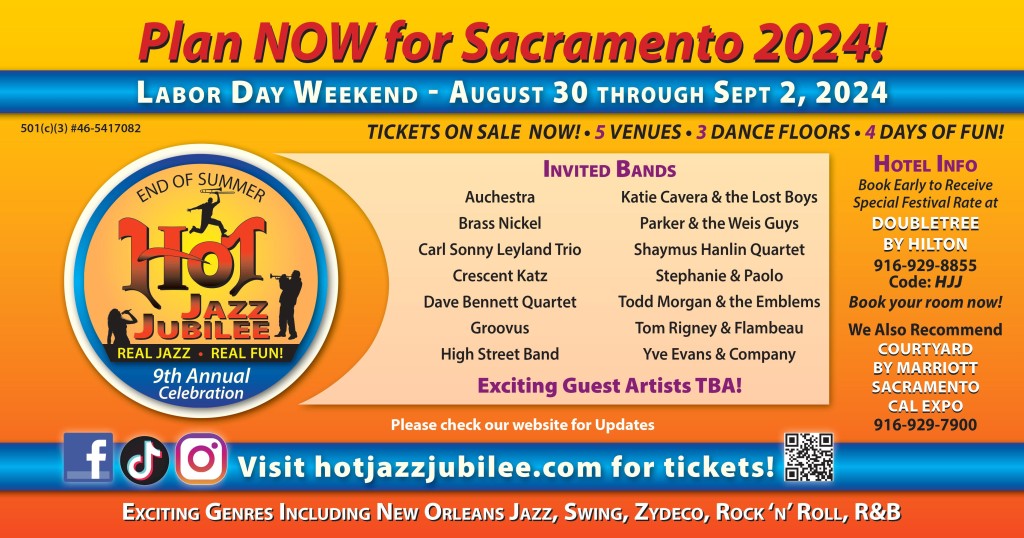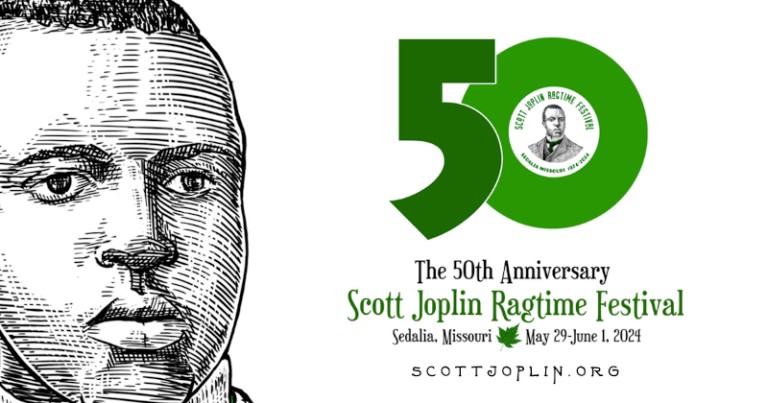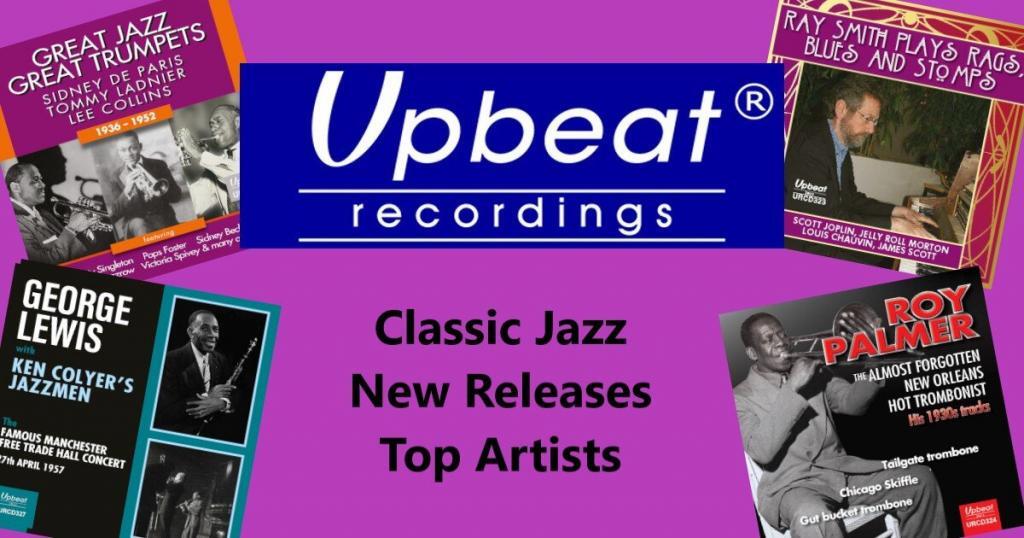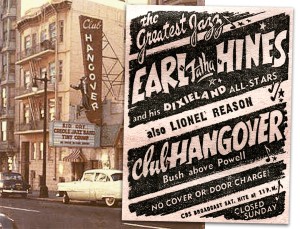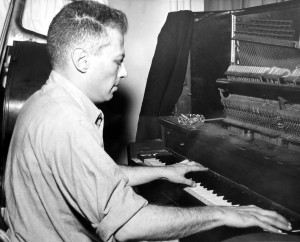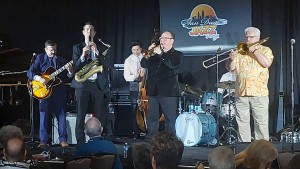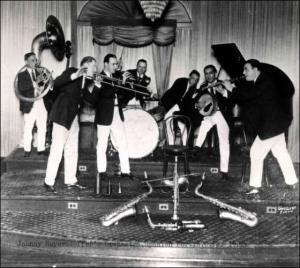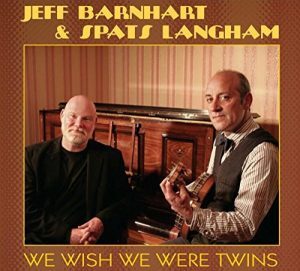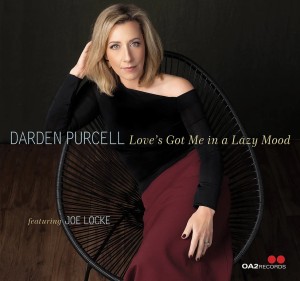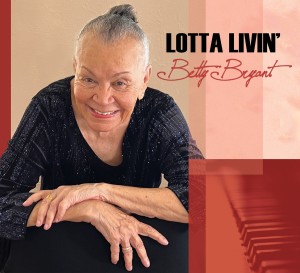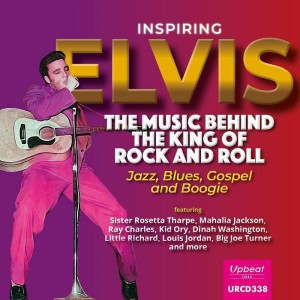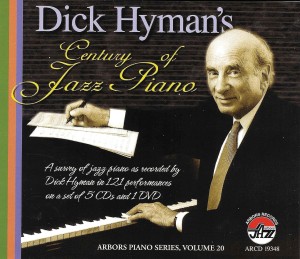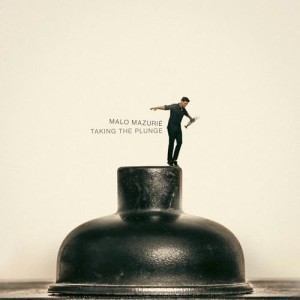 Set forth below is the twenty-fifth “Texas Shout” column. It first appeared in the February 1992 issue of the West Coast Rag, (now Syncopated Times.) The following note was added when the column was reprinted in the late 90s.
Set forth below is the twenty-fifth “Texas Shout” column. It first appeared in the February 1992 issue of the West Coast Rag, (now Syncopated Times.) The following note was added when the column was reprinted in the late 90s.
Since 1992, although audio cassettes still make up an appreciable part of the market for recordings, CDs have become the biggest sellers. Most of today’s collector/ specialist labels offer CD booklets containing the same kind of comprehensive and useful background information that used to appear on the back side of LP sleeves. Information accompanying CDs aimed at a wider audience is more likely to be woefully inadequate, probably because the biggest segment of the record-buying public now is made up of adolescents, whose musical tastes are not mature and whose attention span — dumbed down by our execrable public schools and by fast-cut MTV-type film editing — is virtually nonexistent.
I once read a Sunday-supplement article (I wish I’d saved it) that contained, among other lists, a ranking of the subjects about which the most bad books had been written. I don’t remember which was which, but Jazz and Movies were ranked in the first and third slots.
As someone deeply interested in both, I can testify that there is a lot of truth in that list. With respect to movies, it seems that anyone with a reasonable collection of stills can get a book published displaying them, frequently mislabeled, replete with a text suffused with all kinds of unverifiable gossip, speculation and outright misstatements. Similarly, books about jazz regularly appear that offer opinion or guesswork as fact, refer to long-discredited research and set forth first-hand “recollections” that are easily disprovable via a glance through the standard references.
Nevertheless, if you’re a novice at a topic and you want to get oriented toward it, the best way to do so is to read general surveys and popular histories of the field. That’s what I did for both jazz and movies.
When my long-standing love affair with movies began to crystallize into a serious pursuit — as the result of a wonderful book on silent films that my first wife happened to see on a sale stand and thought I might enjoy — I started compiling a shelf of references which includes, as I later learned, volumes so useless that I doubt I’ll ever get around to reading them. Similarly, because I lacked any mentor to guide me, as a teenager I waded through my local library’s jazz collection, picking up classics as well as hopelessly biased and/or dated material that, had I allowed it to do so, could have severely narrowed both my outlook toward and enjoyment of this music.
Unless the book contains discographical data or musical analysis that can be applied to my record or sheet music collection, I rarely read jazz books anymore. I haven’t felt the need to do so because, fortuitously, I started collecting records at the beginning of the LP era.
12″ LPs, with their sizeable back sleeves allowing for a fairly ample text, proved to be a painless way to learn about Dixieland in depth. The sleeve notes weren’t all that long, and were focused precisely on the specific tunes and artists I was about to enjoy. Reading them at the time of purchase, when I was first listening to the record, helped fix the comments in my mind, enabling me to associate them with the tunes so closely that I can still, decades later, easily recall them when discussing jazz or announcing from the bandstand.
Unfortunately, today’s listeners do not have this opportunity because LPs have all but disappeared from the market. Judged by the volume of sales, the format preferred by today’s buyers is the audiocassette.
For casual listening in the car, as an escape from the noise clogging the radio waves and to make the miles pass more swiftly, audio cassettes are hard to beat. However, they are an inferior collector’s medium.
Even the best cassettes are still made of flimsy materials, more easily given to wearing out than were LPs or 78s, and subject to the occasional jam or tangle that requires junking the whole album (if you scratch part of an LP, you can still listen to the rest of it). Further, cassettes can’t be programmed for listening to selected tracks.
The chief weakness of cassettes, from the viewpoint of today’s column, however, is the inadequacy or outright nonexistence of liner notes in the typical tape package. To be sure, there is little enough space for any, unless the producer goes for the additional expense of a multi-fold insert. However, I see far too many cassettes in which the available space on the reverse of the insert is left blank, thereby abandoning any effort to include even those few words that might involve the listener more deeply with the music.
That’s really too bad. Older-style jazz isn’t so commercially healthy that it can afford to pass up the chance to help people enjoy it. Maybe CDs. with their accompanying booklets, will take up the slack, but I think the jury’s still out on that point.
In the meantime, we’re back to Square One. If you want to orient yourself to Dixieland, ragtime and related music, your best bet is to read a book on it, hoping, despite all the dreck on the market, that you’ll pick a good one.
I’m going to use the rest of this column to try to give you a leg up. Although I haven’t read some of these books for decades, the good ones in the field stand so far above the pack that it’s easy to recall them.
All of the titles mentioned below can be read and enjoyed by someone who is not a musician. They supply background against which to appreciate our music, and will point you in the direction of worthwhile artists who’ve recorded it.
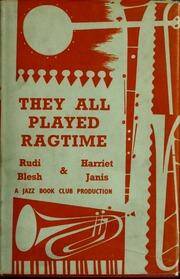 Far and away the best popular history ever written about music within West Coast Rag‘s main area of interest is They All Played Ragtime, by Rudi Blesh and Harriet Janis. Ms. Janis’s meticulous research, done at a time when many important ragtimers were still on the scene to be interviewed, provided the perfect platform for Rudi’s articulate, romantic, fan-oriented, highly readable prose. This remarkable work has, understandably, been reprinted several times and has inspired many people, including this writer, to become ragtimers.
Far and away the best popular history ever written about music within West Coast Rag‘s main area of interest is They All Played Ragtime, by Rudi Blesh and Harriet Janis. Ms. Janis’s meticulous research, done at a time when many important ragtimers were still on the scene to be interviewed, provided the perfect platform for Rudi’s articulate, romantic, fan-oriented, highly readable prose. This remarkable work has, understandably, been reprinted several times and has inspired many people, including this writer, to become ragtimers.
Further, for a pioneering volume — the first book ever written about ragtime — it stands up amazingly well over the decades. I am not aware that any of its factual research has ever been disproved in a significant respect. Further, its value judgements made are still sound, with the following exception:
TAPR, as it is affectionately known in the ragtime community, focuses primarily on Scott Joplin and the other Missouri valley ragtime composers. In doing so, it tends to dismiss the white ragtimers of Tin Pan Alley and of novelty ragtime. Eventually, Rudi acknowledged that, although these ragtime branches did produce works of insufficient merit to justify resurrection, they also produced a substantial body of worthwhile material, including some masterpieces. In fact, the same statement can be made of the other ragtime styles, and indeed of all segments of popular culture.
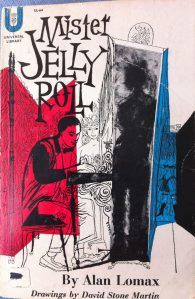 If Dixieland and not ragtime is your thing, seek out Mr. Jelly Roll, by Alan Lomax. Lomax cuts back and forth from Jelly’s story, told in Morton’s own colorful words, to independent research about the period and place under discussion, providing the appropriate setting (and sometimes some corrections) to Morton’s narrative. It is a compelling tale, covered so poignantly that I got misty-eyed as I read of his trek West over snow-covered mountain roads with his two aging automobiles chained together.
If Dixieland and not ragtime is your thing, seek out Mr. Jelly Roll, by Alan Lomax. Lomax cuts back and forth from Jelly’s story, told in Morton’s own colorful words, to independent research about the period and place under discussion, providing the appropriate setting (and sometimes some corrections) to Morton’s narrative. It is a compelling tale, covered so poignantly that I got misty-eyed as I read of his trek West over snow-covered mountain roads with his two aging automobiles chained together.
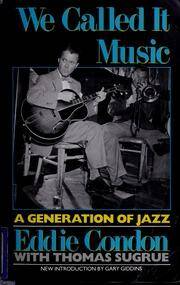 One of the wittiest of the jazzmen/ writers was archetypical Chicago guitarist Eddie Condon. All of his books are brim-full of engaging anecdotes about his free-wheeling and usually famous cohorts. We Called It Music, by Eddie Condon and Thomas Sugrue, did much to point me toward the right Chicago musicians, even while I was splitting my sides laughing at such stories as the one where, as an audition tune for a gig at a sedate hotel, Condon’s youthful jazz combo ripped through “Meet Me Tonight In Dreamland,” only to have the manager ask, at the conclusion . . . but no, I really should let Condon tell it as only he can.
One of the wittiest of the jazzmen/ writers was archetypical Chicago guitarist Eddie Condon. All of his books are brim-full of engaging anecdotes about his free-wheeling and usually famous cohorts. We Called It Music, by Eddie Condon and Thomas Sugrue, did much to point me toward the right Chicago musicians, even while I was splitting my sides laughing at such stories as the one where, as an audition tune for a gig at a sedate hotel, Condon’s youthful jazz combo ripped through “Meet Me Tonight In Dreamland,” only to have the manager ask, at the conclusion . . . but no, I really should let Condon tell it as only he can.
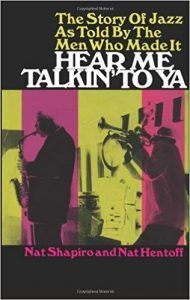 Bits and pieces of interviews with great jazzmen are broken down and reassembled into chapters on specific topics or scenes in Hear Me Talkin’ To Ya, edited by Nat Shapiro and Nat Hentoff. This entertaining book will introduce you to a lot of famous players, making you feel like they’re sitting at your table over a beer, chatting just for your ears alone.
Bits and pieces of interviews with great jazzmen are broken down and reassembled into chapters on specific topics or scenes in Hear Me Talkin’ To Ya, edited by Nat Shapiro and Nat Hentoff. This entertaining book will introduce you to a lot of famous players, making you feel like they’re sitting at your table over a beer, chatting just for your ears alone.
The bio-discography is a type of jazz volume that usually focuses on an artist’s records, interspersing the analysis thereof with sketchy information about the person. Such books are quite specialized, and really ought to be discussed in a separate column (which I’ll probably write someday) dealing with jazz reference material.
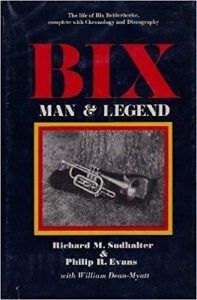 One work, though, that splendidly transcends the limitations of the bio-discography is Bix: Man And Legend, by Richard Sudhalter, with Philip Evans. Sudhalter, a fine Bix-influenced trumpeter and a first-rate writer, built an astonishingly complete biographical text out of Evans’s painstaking research, including appendices that contain a definitive Bix discography and itinerary. This is one of the few cases where the author was able to capture the flavor of a jazzman who had died decades before in a way that brings him vividly to life for the reader.
One work, though, that splendidly transcends the limitations of the bio-discography is Bix: Man And Legend, by Richard Sudhalter, with Philip Evans. Sudhalter, a fine Bix-influenced trumpeter and a first-rate writer, built an astonishingly complete biographical text out of Evans’s painstaking research, including appendices that contain a definitive Bix discography and itinerary. This is one of the few cases where the author was able to capture the flavor of a jazzman who had died decades before in a way that brings him vividly to life for the reader.
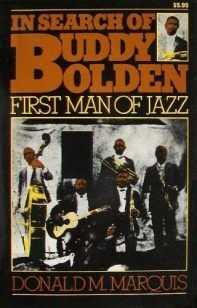 Those specifically interested in the earliest days of jazz won’t go wrong with In Search Of Buddy Bolden, First Man of Jazz, by Don Marquis. Marquis unearthed an incredible amount of information about a topic one would have thought was barely documented, the New Orleans Black life at the turn of the century, writing it up in a way that causes the whole sprawling scene to jump right out of the pages.
Those specifically interested in the earliest days of jazz won’t go wrong with In Search Of Buddy Bolden, First Man of Jazz, by Don Marquis. Marquis unearthed an incredible amount of information about a topic one would have thought was barely documented, the New Orleans Black life at the turn of the century, writing it up in a way that causes the whole sprawling scene to jump right out of the pages.
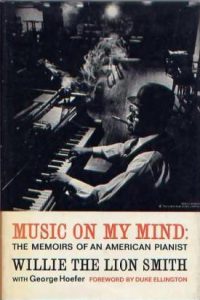 The immortal stride pianist Willie “The Lion” Smith does the same thing for the barrelhouses of Harlem in his rich autobiography Music On My Mind. You don’t know what a lowlife bar is until The Lion takes you to the ones he worked, where waitresses and female entertainers could pick up extra tips from tables by doing the”ups”, a calisthenic that you won’t be taught in your aerobics class.
The immortal stride pianist Willie “The Lion” Smith does the same thing for the barrelhouses of Harlem in his rich autobiography Music On My Mind. You don’t know what a lowlife bar is until The Lion takes you to the ones he worked, where waitresses and female entertainers could pick up extra tips from tables by doing the”ups”, a calisthenic that you won’t be taught in your aerobics class.
More recently-written jazz volumes suffer a bit because there are so few of the original participants left to be interviewed. Thus, the tone tends to be a bit more academic, and the players a bit more remote — not an ideal state for a book about a music that depends so much on the emotional response it evokes in its listeners. On the other hand, the distance lets the author see his subject in perspective, enabling him to produce helpful commentary on the nature of an artist’s overall output.
These strengths and weaknesses can be found in three excellent volumes, A Left Hand Like God, by Peter Silvester (the only full-length work to date devoted entirely to boogie-woogie piano); Louis Armstrong, An American Genius, by James Lincoln Collier; and Sidney Bechet, Wizard Of Jazz, by John Chilton. However, for maximum benefit, readers thereof should, I think, have some prior familiarity via recordings with the artists being discussed.
Concentrating as I have on LP liner notes, I have not read some very highly-regarded books about our music, such as the reminiscences of Danny Barker and Bud Freeman. Similarly, because I am not that interested in reading books that spend too much (for me) time on swing, I have not read Warren Vaché, Sr.’s editing of the memoirs of Pee Wee Erwin, nor the recent volumes by Chip Deffaa. I’ll mention them, though, because they have received so much praise from so many reviewers that I’m sure they will reward reading by anyone interested in the artists being discussed therein.
Finally, without wanting to cast gratuitous brickbats, I would classify Shining Trumpets, by Rudi Blesh, which is somewhat dated and overly opinionated, and Blues People, by LeRoi Jones, which is badly biased, as tomes that have outlived whatever use to jazz researchers they may once have had. I mention these volumes because they are still frequently cited in jazz bibliographies. I would recommend that, if you want to investigate either of them, you postpone doing so until you are firmly enough based in the music to be able to discount for their deficiencies.
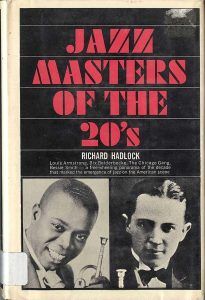 What about other big names, such as Bessie Smith, The Original Dixieland Jazz Band, Ma Rainey, and Fats Waller? Of course, there are books about them and virtually every other well-known jazzman, as well as lesser names. With respect to the four just mentioned, I’ve read several, some with special merits, but none which satisfies me enough to recommend it here. However, for useful treatments of important figures at less than book length, try Jazz Masters Of The 20’s, by Richard Hadlock.
What about other big names, such as Bessie Smith, The Original Dixieland Jazz Band, Ma Rainey, and Fats Waller? Of course, there are books about them and virtually every other well-known jazzman, as well as lesser names. With respect to the four just mentioned, I’ve read several, some with special merits, but none which satisfies me enough to recommend it here. However, for useful treatments of important figures at less than book length, try Jazz Masters Of The 20’s, by Richard Hadlock.
I have suggested eleven books, plus a few that I haven’t gotten around to as yet. That ought to be enough to get you started. Each will provide you with enjoyable reading as well as sound additional grounding in our music. Once you’ve gotten your arms around everything that’s in them, you should be in a good position to find your way unescorted. Happy reading.
Tex provides a reading list at his educational retreats including the above-mentioned books and many others that he would consider books about the music itself rather than personalities and events. You can read his discussion of those books in Texas Shout #14 Books About The Music
The complete list is here: Tex Wyndham’s Reading List
Back to the Texas Shout Index.

The full run of “Texas Shout” has been collected into a lavishly illustrated trade paperback entitled Texas Shout: How Dixieland Jazz Works. This book is available @ $20.00 plus $2.95 shipping from Tex Wyndham, On request, Tex will autograph the book and add a personalized note (be sure to tell him to whom the note should be addressed).
Tex Wyndham’s 3 CD Guide to Dixieland with music and commentary is available for $20 plus $2.95 shipping. The separate CD, A History of Ragtime: Tex Wyndham Live At Santa Rosa, is available for $13.00 plus $2.00 shipping. On request, Tex will autograph the inner sleeve and add a personalized note (be sure to tell him to whom the note should be addressed).
Send payment to Tex Wyndham, P.O. Box 831, Mendenhall, PA 19357, Phone (610) 388-6330.
Note: All links, pictures, videos or graphics accompanying the Shouts were added at the discretion of the Syncopated Times editorial staff. They did not accompany the original columns and do not necessarily reflect the opinion of Tex Wyndham.
Where we can link directly to an artist, publisher, or record label when mentioning an item we do so. For items where this is not possible, we link to Amazon. “As an Amazon Associate we earn from qualifying purchases.”
